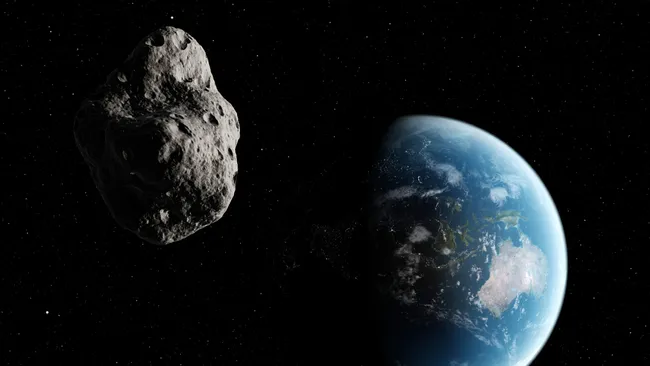NASA has recently updated the impact probability of asteroid 2024 YR4, a near-Earth object with an estimated diameter of approximately 177 feet (54 meters). Initially detected in December 2024, the asteroid’s potential collision course with Earth has been a subject of close monitoring. As of February 18, 2025, the likelihood of 2024 YR4 impacting Earth on December 22, 2032, has risen to 3.1%, or 1 in 32, according to NASA’s Center for Near Earth Object Studies.
This increase follows a series of escalating assessments: on February 7, 2025, the impact probability was adjusted from 1.2% to 2.3%, then to 2.6%, and now stands at 3.1%. While a 3.1% chance may seem minimal, it represents the highest recorded probability for an asteroid impact of this magnitude. The asteroid’s size suggests that, if it were to collide with Earth, it could release energy equivalent to approximately 8 megatons of TNT, more than 500 times the energy released by the atomic bomb detonated over Hiroshima.
The potential impact zone encompasses several densely populated urban areas, placing over 100 million people at risk. Major cities such as Bogotá, Mumbai, and Dhaka lie within the projected path, raising significant concerns about the possible consequences of an impact. The asteroid’s high velocity, estimated at 30,000 mph, would exacerbate the devastation, with a potential blast radius extending up to 30 miles (50 kilometers).
In response to the escalating impact probability, NASA has initiated plans to utilize the James Webb Space Telescope (JWST) for further observation of 2024 YR4. This decision is time-sensitive, as the asteroid will soon move behind the Sun, rendering it unobservable until 2028. The JWST’s advanced capabilities are expected to provide more precise data regarding the asteroid’s size, composition, and trajectory, which are crucial for assessing potential mitigation strategies.
Despite the increased probability, there remains a 96.9% chance that 2024 YR4 will not impact Earth. Historically, as more observational data becomes available, the calculated risk of impact often decreases. Scientists are actively gathering additional information to refine the asteroid’s predicted path and reduce uncertainties. Public awareness and preparedness are essential, but it’s important to approach the situation with measured concern, acknowledging both the potential risks and the ongoing efforts to monitor and mitigate them.
Read Also:
Aidan Miller: Phillies’ Rising Star Shines in Spring Training
Read Also:
Ja Morant’s Resilient Return: From Season-Ending Surgery to Leading the Grizzlies
Read Also:
Victor Osimhen Shines as Galatasaray Secures Top Spot in Turkish Super Lig

1 thought on “Asteroid 2024 YR4: NASA Raises Impact Probability to 3.1%”